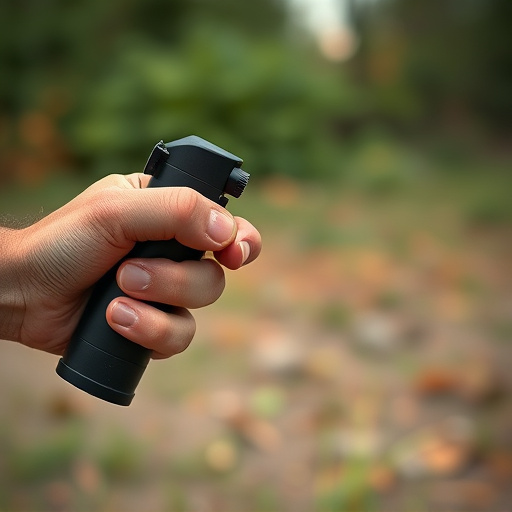Pepper spray, a self-defense tool, causes eye, nose, and respiratory irritation. Quick removal from clothing is vital to prevent prolonged discomfort. Rinse affected areas with water for 15 minutes, then gently wash in cold water. Understand legal frameworks and safety protocols for pepper spray use. Proper training, de-escalation techniques, and storage practices are essential.
“In today’s diverse and dynamic world, understanding civilian protection tools like inflammatory sprays is paramount. This article delves into the intricacies of pepper spray, its composition, and the powerful effects it can have. We explore why promptly removing pepper spray stains from clothing is crucial, detailing potential risks and discomforts associated with prolonged exposure. Discover effective methods to safely mitigate these stains, alongside essential legal considerations for civilian use, ensuring both protection and safety.”
- Understanding Pepper Spray: Its Composition and Effects
- Why Remove Pepper Spray from Clothing? Potential Risks and Discomforts
- Effective Methods to Safely Remove Pepper Spray Stains from Clothing
- Legal and Safety Considerations for Civilian Use of Inflammatory Sprays
Understanding Pepper Spray: Its Composition and Effects
Pepper spray, a potent irritant designed for civilian protection, is a powerful tool when it comes to self-defense. Its composition typically includes capsaicin, the active ingredient found in chili peppers, along with various other additives that enhance its effectiveness and longevity. When deployed, pepper spray causes immediate discomfort by irritating the eyes, nose, and respiratory system, making it difficult for an attacker to breathe or see clearly. This temporary blindness and breathlessness provide a crucial window of opportunity for victims to escape.
While effective, removing pepper spray from clothing is essential after exposure. The spray can adhere tightly to fabrics, leading to prolonged irritation if left untreated. Simple steps like quickly changing into clean clothes and rinsing affected areas with water can help mitigate the effects. However, in cases where the pepper spray has soaked through fabrics, professional cleaning or specialized removal solutions might be necessary to ensure complete decontamination.
Why Remove Pepper Spray from Clothing? Potential Risks and Discomforts
When considering inflammatory spray for civilian protection, it’s crucial to understand that removing pepper spray from clothing is a critical step in mitigating potential risks and discomforts. Pepper spray, designed to cause temporary blindness and breathing difficulties, can remain active on fabrics for extended periods. If not properly addressed, contaminated clothing can reintroduce the irritant into the user’s environment or even other individuals, leading to secondary exposure and prolonging the effects.
Removing pepper spray from clothing is essential to ensure personal safety and comfort. Traditional cleaning methods may not effectively deactivate the chemical agents present in pepper spray. Specialized cleaning solutions or techniques are required to thoroughly remove residual spray. Neglecting this process could result in lingering odors, skin irritation, or even respiratory issues for the wearer, especially if the affected clothing is worn again without proper decontamination.
Effective Methods to Safely Remove Pepper Spray Stains from Clothing
When it comes to removing pepper spray stains from clothing, acting quickly is crucial. The first step involves rinsing the affected area with cold water for at least 15 minutes to dilute and flush out as much of the irritant as possible. It’s essential to do this immediately after exposure to minimize damage and discomfort.
After initial rinsing, gently washing the garment using a mild detergent can help lift the pepper spray residue. Avoid using hot water or aggressive scrubbing, as these actions may set the stain and cause it to become more difficult to remove. Instead, opt for a gentle cycle and cold water to ensure safe removal of pepper spray stains from clothing while preserving the fabric’s integrity.
Legal and Safety Considerations for Civilian Use of Inflammatory Sprays
When considering inflammatory sprays, or pepper spray, for civilian protection, it’s crucial to understand the legal landscape and safety protocols surrounding their use. In many jurisdictions, the possession and use of such sprays are tightly regulated, with specific restrictions on who can buy and carry them, as well as where and when they can be deployed. Civilians must ensure they operate within the boundaries set by local laws to avoid facing penalties, including fines or imprisonment.
Safety is paramount when handling inflammatory sprays. Users must receive proper training in their application, aiming, and de-escalation techniques to minimize risks. Additionally, civilians should be aware of the spray’s limitations and potential side effects on individuals with certain medical conditions. Regular maintenance and storage of the sprays are also essential, including removing pepper spray from clothing promptly to prevent accidental activation or contamination.
Pepper spray, while powerful tools for self-defense, can cause significant discomfort if not properly managed. Understanding its composition and potential risks is crucial when considering civilian protection. Removing pepper spray from clothing is essential to mitigate long-term effects and prevent legal issues. This article has provided effective methods to safely address these stains, alongside important legal considerations. Remember that responsible use and prompt action after exposure are key to navigating the world of inflammatory sprays with caution.
